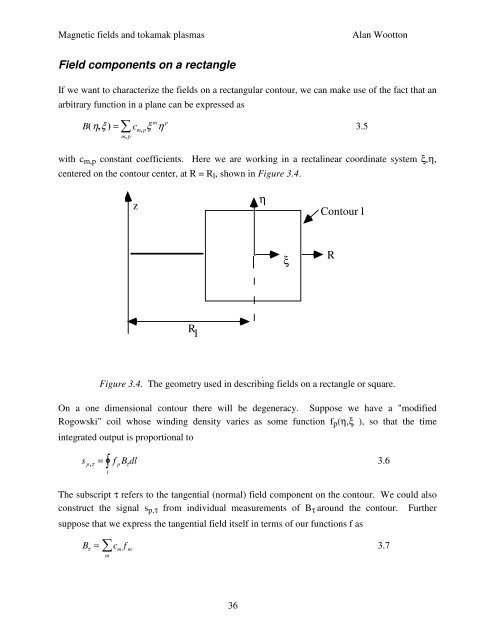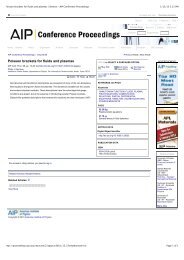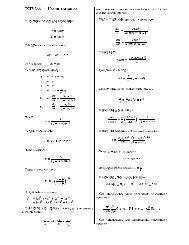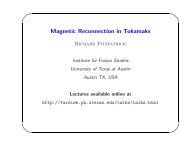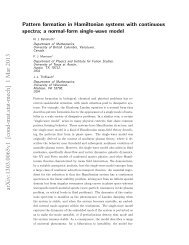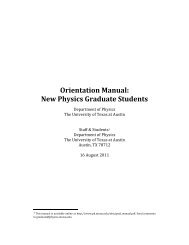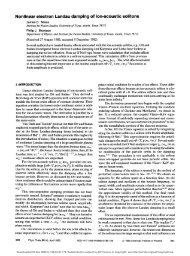Magnetic Fields and Magnetic Diagnostics for Tokamak Plasmas
Magnetic Fields and Magnetic Diagnostics for Tokamak Plasmas
Magnetic Fields and Magnetic Diagnostics for Tokamak Plasmas
Create successful ePaper yourself
Turn your PDF publications into a flip-book with our unique Google optimized e-Paper software.
<strong>Magnetic</strong> fields <strong>and</strong> tokamak plasmas<br />
Alan Wootton<br />
Field components on a rectangle<br />
If we want to characterize the fields on a rectangular contour, we can make use of the fact that an<br />
arbitrary function in a plane can be expressed as<br />
B(η,ξ ) = ∑ c m, p<br />
ξ m η p<br />
3.5<br />
m, p<br />
with c m,p constant coefficients. Here we are working in a rectalinear coordinate system ξ,η,<br />
centered on the contour center, at R = R l , shown in Figure 3.4.<br />
z<br />
η<br />
Contour l<br />
ξ<br />
R<br />
R l<br />
Figure 3.4. The geometry used in describing fields on a rectangle or square.<br />
On a one dimensional contour there will be degeneracy. Suppose we have a "modified<br />
Rogowski" coil whose winding density varies as some function f p (η,ξ ), so that the time<br />
integrated output is proportional to<br />
s p,τ<br />
= ∫ f p<br />
B τ<br />
dl<br />
3.6<br />
l<br />
The subscript τ refers to the tangential (normal) field component on the contour. We could also<br />
construct the signal s p,τ from individual measurements of B τ around the contour. Further<br />
suppose that we express the tangential field itself in terms of our functions f as<br />
B τ<br />
= ∑ c m<br />
f m<br />
3.7<br />
m<br />
36


